Arriving at Bao Ha commune, what impressed us most were not the familiar corn fields or cinnamon hills, but the rows of mulberry trees gradually covering the hills. This plant species, which was thought to be only suitable for the sandy land and rice fields, has now taken root and flourished on the barren hills.

Leading us through a lush mulberry hill of nearly 3 hectares - the result of more than 2 years of converting hill land to mulberry cultivation - Ms. Nguyen Thi Sinh (Khoai 3 village) said: "Previously, my family only grew corn and cassava on this area, which did not yield much income, mainly for raising livestock and poultry. Since switching to mulberry cultivation, my family has had the additional job of raising silkworms, earning millions of dong each month. This source of income helps the family have more conditions to send their children to school and cover living expenses."
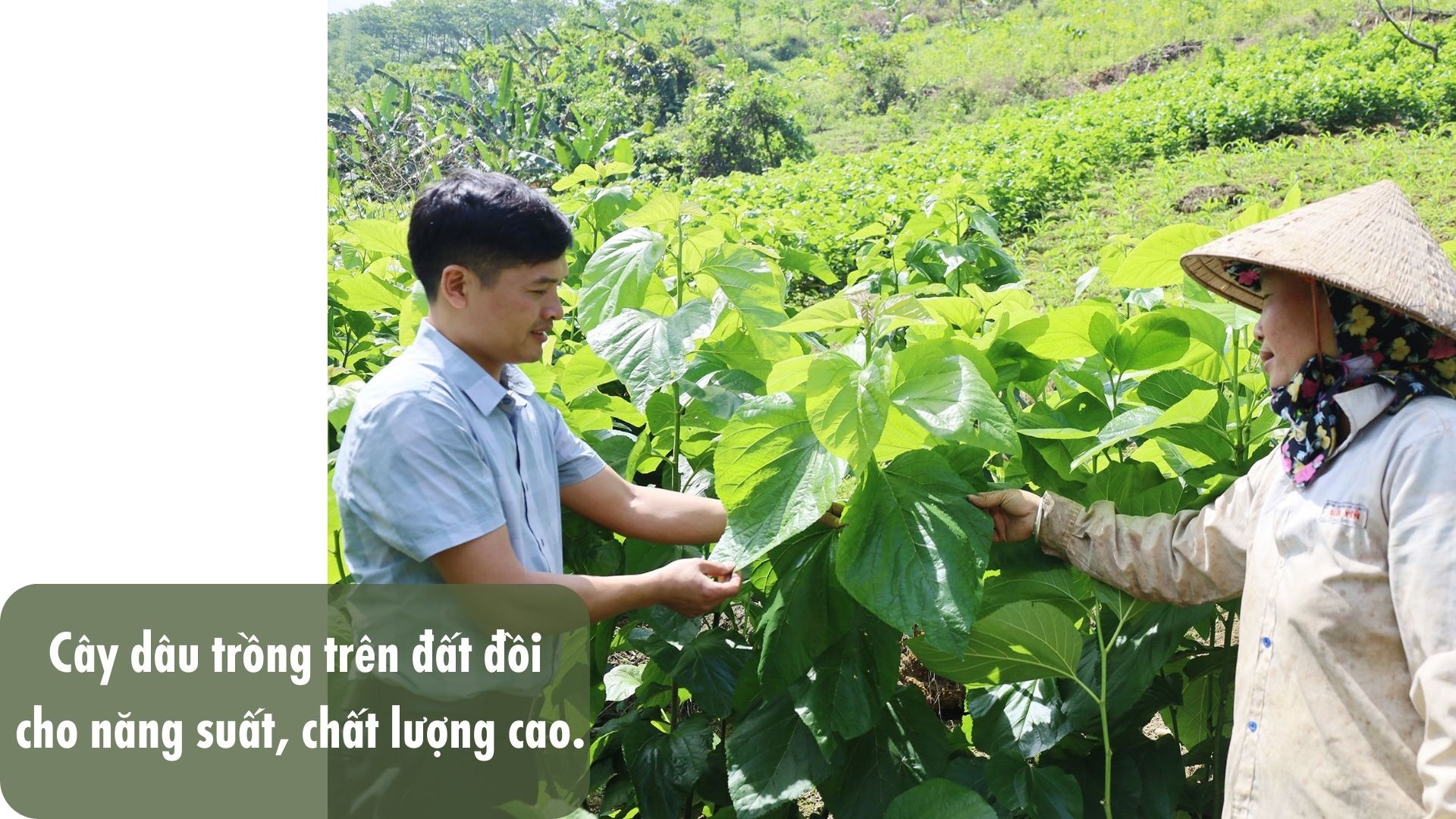
The mulberry variety that Ms. Sinh brought in to plant was purchased from Lam Dong province, and has different characteristics from the variety currently grown locally. After a period of planting, she realized that this mulberry variety is drought-resistant, easy to care for, grows well on hilly land, and has a fast growth rate. After only 3-4 months, the leaves can be harvested to feed silkworms. In particular, the quality of the leaves is large, thick, and even, helping silkworms grow quickly.
“Compared to old crops such as corn and cassava, growing mulberry combined with raising silkworms for cocoons gives a much higher income. This year, I will continue to convert the remaining 2 hectares of hilly land to grow mulberry to expand the scale of silkworm farming,” Ms. Sinh added.

Bao Ha commune is located in the mulberry growing planning area of Bao Yen district. According to the plan, this locality strives to have 50 hectares of mulberry by the end of 2025. However, the land area for alluvial land and rice fields to be converted to mulberry cultivation is limited. To solve this problem, the locality has learned from many places to introduce drought-resistant mulberry varieties suitable for hilly land for cultivation.
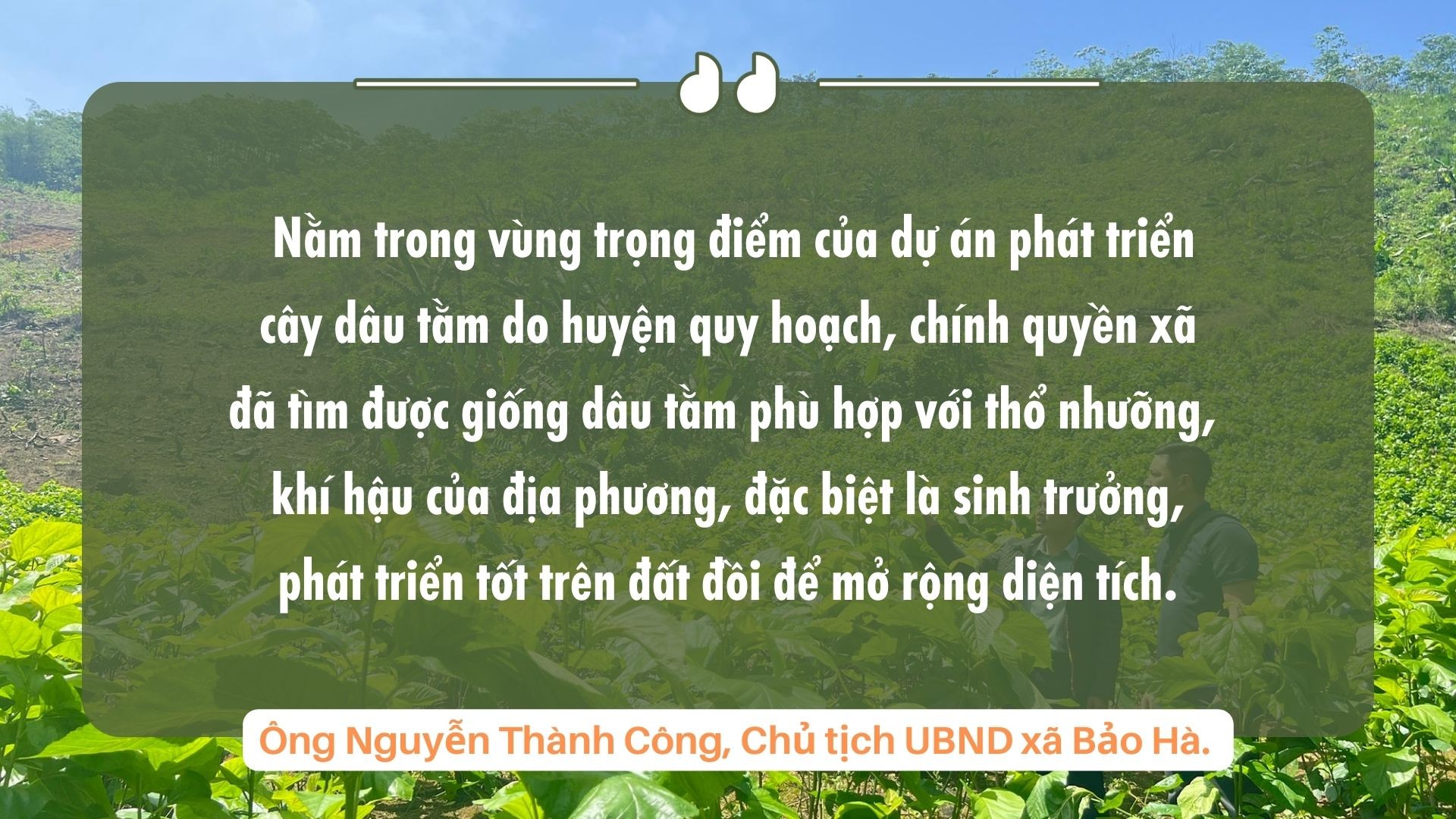
The commune is focusing on mobilizing people to convert hilly and ineffective land to mulberry cultivation; coordinating with the district's professional agencies to provide technical support, seeds, and connect with businesses to purchase silkworm cocoons so that people can feel secure in production. Currently, the commune has nearly 10 hectares of mulberry, of which more than 3 hectares are grown on hilly land. In the coming time, the commune will continue to promote, create favorable conditions and provide necessary support when households expand the mulberry growing area on hilly land.
Bao Yen district has identified mulberry as one of the key crops and encouraged its development in the alluvial plains along rivers and streams in 6 communes: Kim Son, Cam Con, Bao Ha, Viet Tien, Xuan Thuong, Nghia Do. The district strives to restore the entire area to pre-Covid-19 level (about 300 hectares) by the end of 2025, and increase the mulberry growing area in the district to 500 hectares by the end of 2030, while calling for investment in at least 1 silkworm nursery in the area.

However, the expansion of mulberry growing area is still slow. By April, the whole district had only planted 54.3 hectares, a low rate compared to the assigned target. The survey in the communes also showed that the mulberry growing area of households in the area is small and fragmented; the fields of households that want to grow mulberry for silkworms are mixed with fields growing many other crops, leading to the risk of exposure to pesticides, pest infection, directly affecting the food source for silkworms, reducing productivity and quality of cocoons. Many households previously planted mulberry on alluvial land along rivers and streams after being damaged by floods, so they are afraid of risks...
Ms. Nguyen Thi Hai Yen, Director of Bao Yen District Agricultural Service Center, said: To sustainably develop the mulberry growing area in the area, the district has built a mechanism to support trees, seedlings and necessary conditions to encourage households participating in the project to actively expand the area.
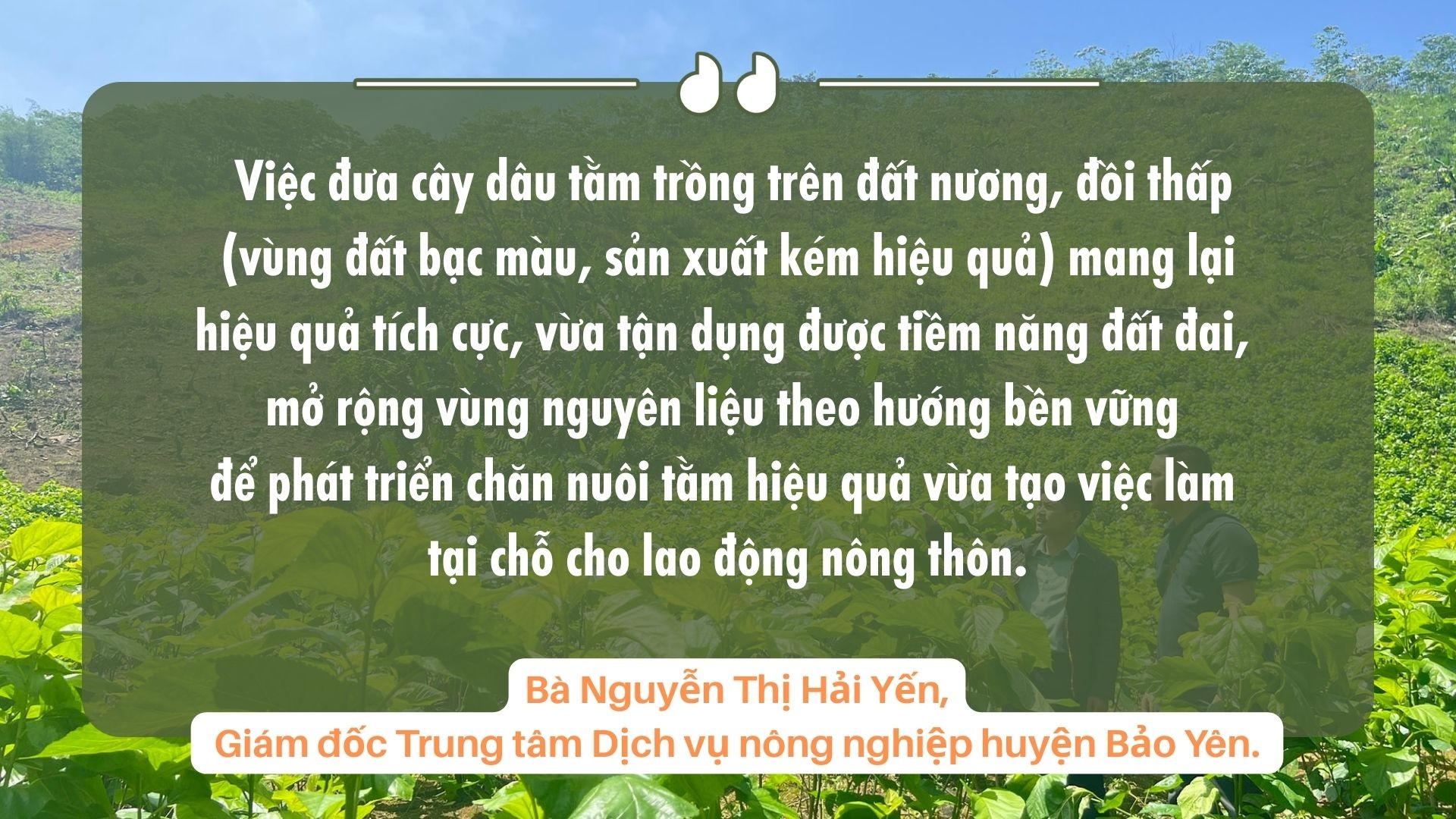
It is estimated that the yield of mulberry leaves is more than 30 tons/ha/year and when combined with silkworm farming (8-10 batches of silkworms/year), it will bring a profit of more than 500 million VND per year for farmers. With the price of silkworm cocoons fluctuating little (at 160,000-200,000 VND/kg) and stable output, people can rest assured to invest and develop the profession.
In the coming time, Bao Yen district will also focus on implementing well the planning of growing areas, promoting the production chain between enterprises and producers; attracting organizations and individuals to invest in deep processing of mulberry products to meet market demand, increasing income for farmers.
At this time, farmers in the mulberry growing area in Bao Yen district are excited to harvest the first batch of silkworm cocoons of the year, which is also the first batch of cocoons after the district restored the mulberry growing area damaged by storm No. 3 in September 2024.
This year, the quality of silkworm cocoons has increased, the selling price has increased, and consumption has been favorable. Currently, the price of silkworm cocoons purchased by the associated unit is 185,000 VND/kg, an increase of 10,000 - 15,000 VND/kg compared to the same period last year.
Bao Yen district currently has more than 54 hectares of mulberry trees. According to calculations, 1 hectare of mulberry for silkworm farming will yield 1.7 - 1.9 tons of cocoons/year, with a selling price of more than 180,000 VND/kg, people will earn more than 300 million VND.
Source: https://baolaocai.vn/trong-cay-dau-tam-tren-dat-doi-post401019.html


![[Photo] Nghe An: Bustling atmosphere celebrating the 50th anniversary of Southern Liberation and National Reunification Day](https://vphoto.vietnam.vn/thumb/1200x675/vietnam/resource/IMAGE/2025/4/29/64f2981da7bb4b0eb1940aa64034e6a7)

![[Photo] Ho Chi Minh City: People are willing to stay up all night to watch the parade](https://vphoto.vietnam.vn/thumb/1200x675/vietnam/resource/IMAGE/2025/4/29/cf71fdfd4d814022ac35377a7f34dfd1)
![[Photo] Prime Minister Pham Minh Chinh meets to prepare for negotiations with the United States](https://vphoto.vietnam.vn/thumb/1200x675/vietnam/resource/IMAGE/2025/4/29/76e3106b9a114f37a2905bc41df55f48)
![[Photo] Hanoi is brightly decorated to celebrate the 50th anniversary of National Reunification Day](https://vphoto.vietnam.vn/thumb/1200x675/vietnam/resource/IMAGE/2025/4/29/ad75eff9e4e14ac2af4e6636843a6b53)
![[Photo] General Secretary attends special art program "Spring of Unification"](https://vphoto.vietnam.vn/thumb/1200x675/vietnam/resource/IMAGE/2025/4/29/e90c8902ae5c4958b79e26b20700a980)
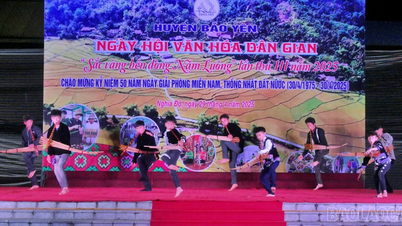


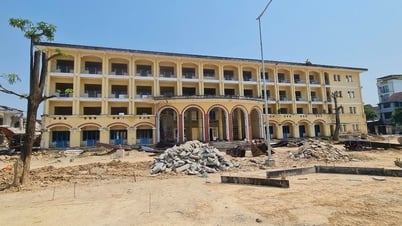

![[Photo] Thong Nhat train pair rolls out to celebrate 50 years of Southern Liberation and National Reunification](https://vphoto.vietnam.vn/thumb/402x226/vietnam/resource/IMAGE/2025/4/29/7784aa05808f41e0bc047efa38fe764d)








![[Photo] The joy of fishing experience in Nghia Do](https://vphoto.vietnam.vn/thumb/402x226/vietnam/resource/IMAGE/2025/4/29/4cb0dd524baf421ab642afb4b744cd51)

![[Photo] People choose places to watch the parade from noon on April 29](https://vphoto.vietnam.vn/thumb/1200x675/vietnam/resource/IMAGE/2025/4/29/3f7525d7a7154d839ff9154db2ecbb1b)
















































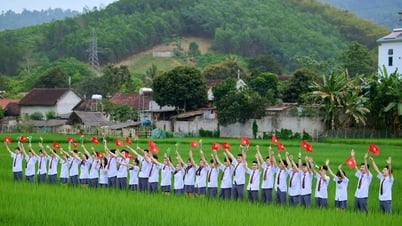


















Comment (0)